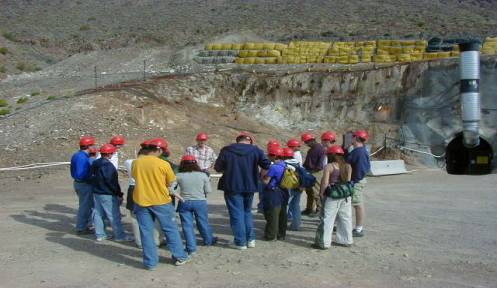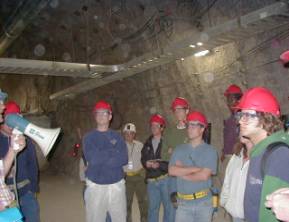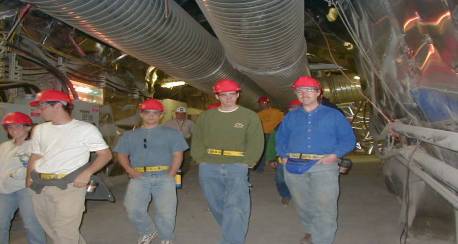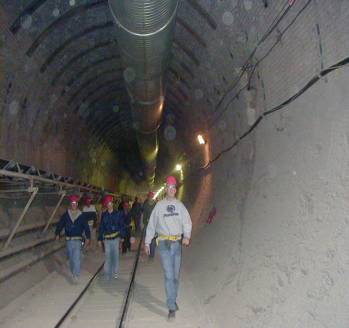

The Diablo Canyon Nuclear Power Plant Entrance
This energy source is one of the cleanest non-renewable energy supplies available to us. To produce energy, a neutron encounters the nucleus of an atom of a uranium isotope and the fuel atom is slit into different elements plus neutrons and heat. The heat is taken out of the reactor to eliminate overheating of the reactor and to produce steam to power the turbines and generators that produce the power. The released neutrons stay in the system to reproduce the reaction.

The Cause 2000 group in front of the nuclear power plant sign

The Cause 2000 group outside of the Yucca Mountain Repository
Currently, radioactive waste is stored on-site at
individual plants in spent fuel pools or aboveground dry casks.
There is a proposed repository in Nevada.
Yucca Mountain, is where all of our current nuclear waste could be stored
one day soon. At Yucca Mountain,
researchers are studying and trying to understand all the components that exist
within the ecosystem.

The Cause 2000 group inside Yucca Mountain
More than 50,000 samples have been taken of the rock
and water from the surface, in the tunnel drifts, and beneath the surface.
Also for more than 10 years, scientists have been monitoring earthquakes
in the local region.

Shawn investigates the rock sampling
Unfortunately,
Yucca Mountain, if the proposal goes through, will be just a start to the United
States nuclear waste storage. Approximately
100 miles of tunnel will hold 70,000 metric tons of spent fuel, when we
currently already have 40,000 metric tons of spent fuel produced.

Strolling through the tunnel through Yucca Mountain
By the
time we would get Yucca Mountain filled up and closed it would be time to start
building another repository. This
creates the problem that time will not be available for further exploration of
the effectiveness of nuclear waste burial.

The long walk out of the tunnel, led by Steve
